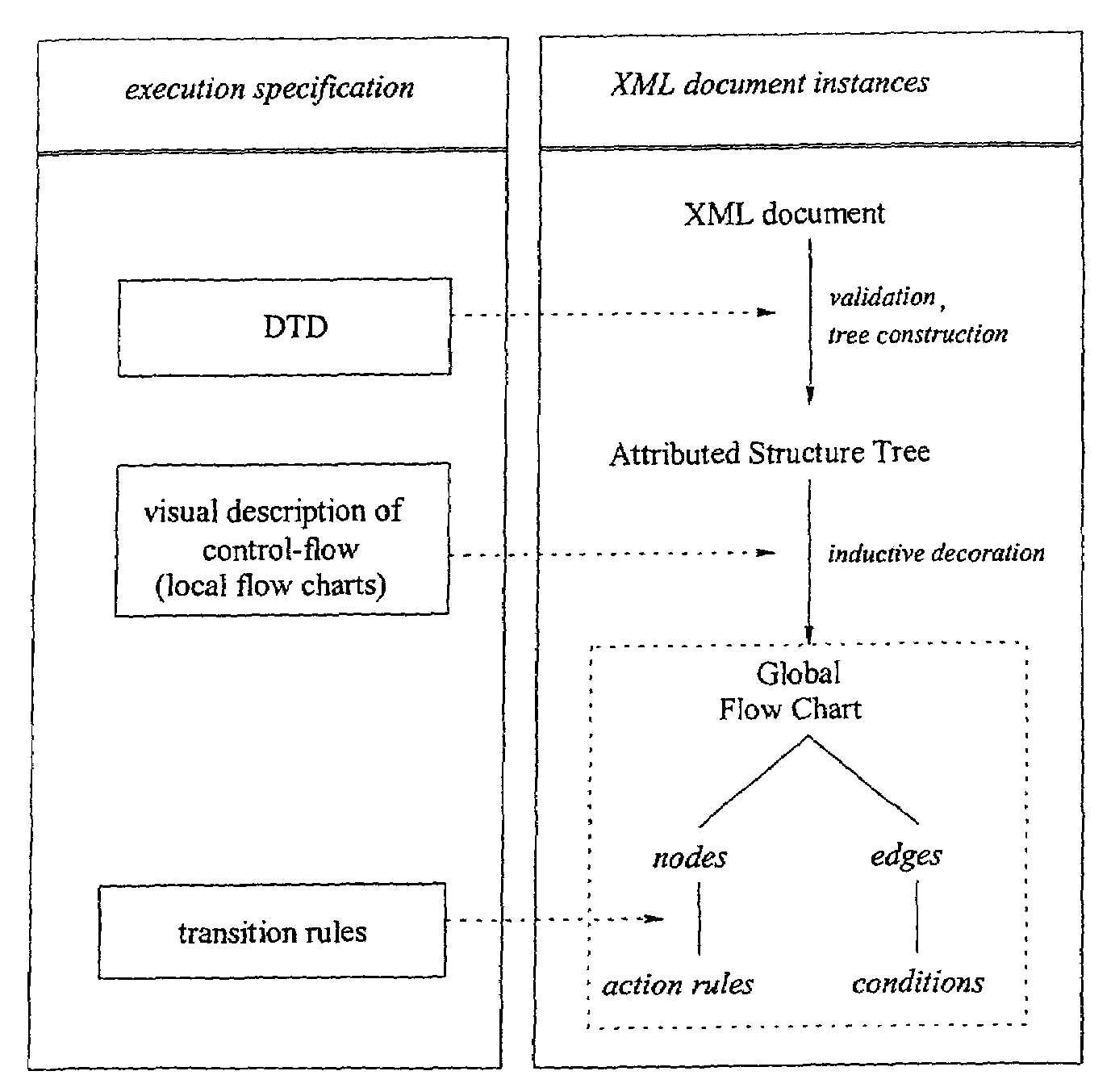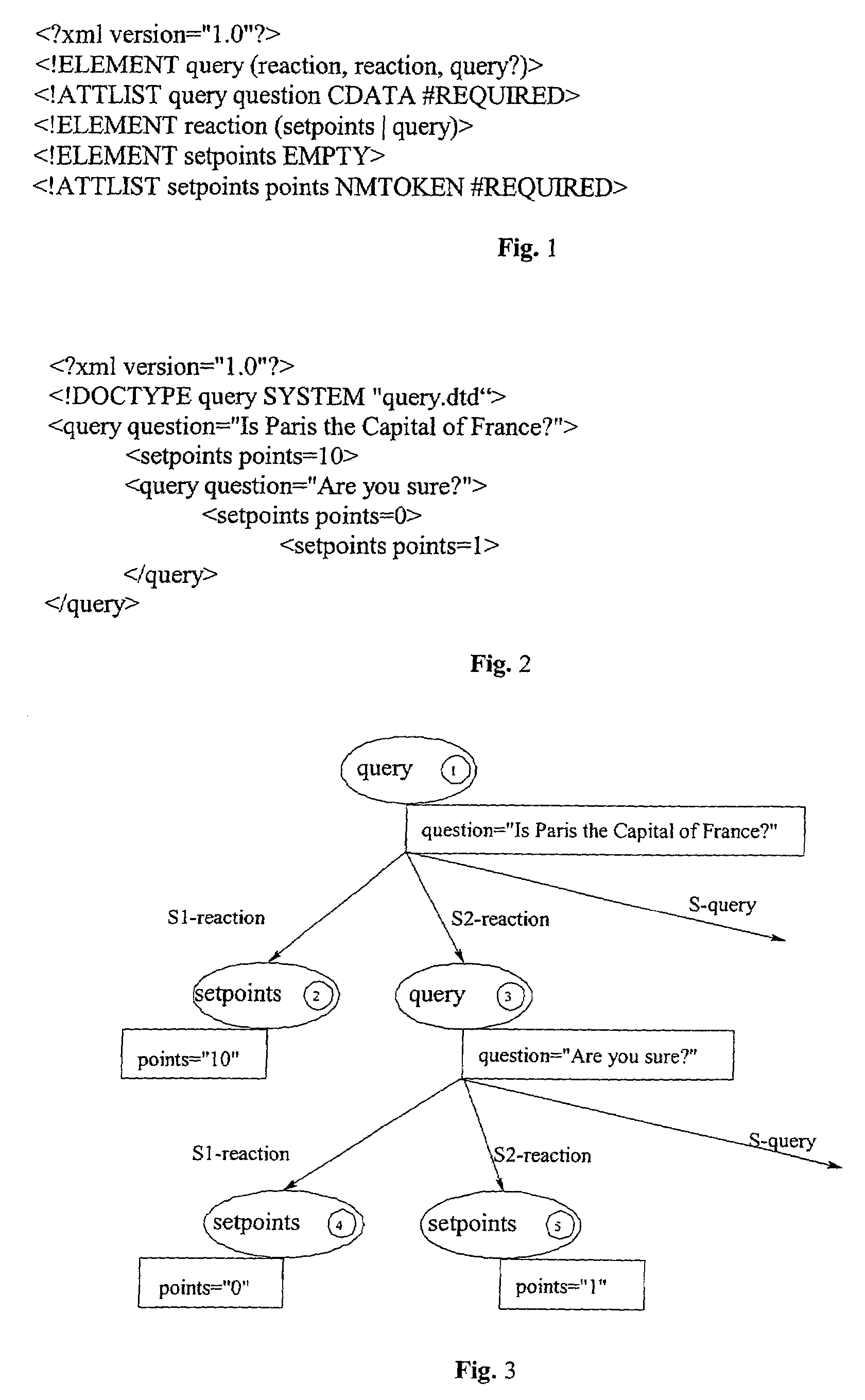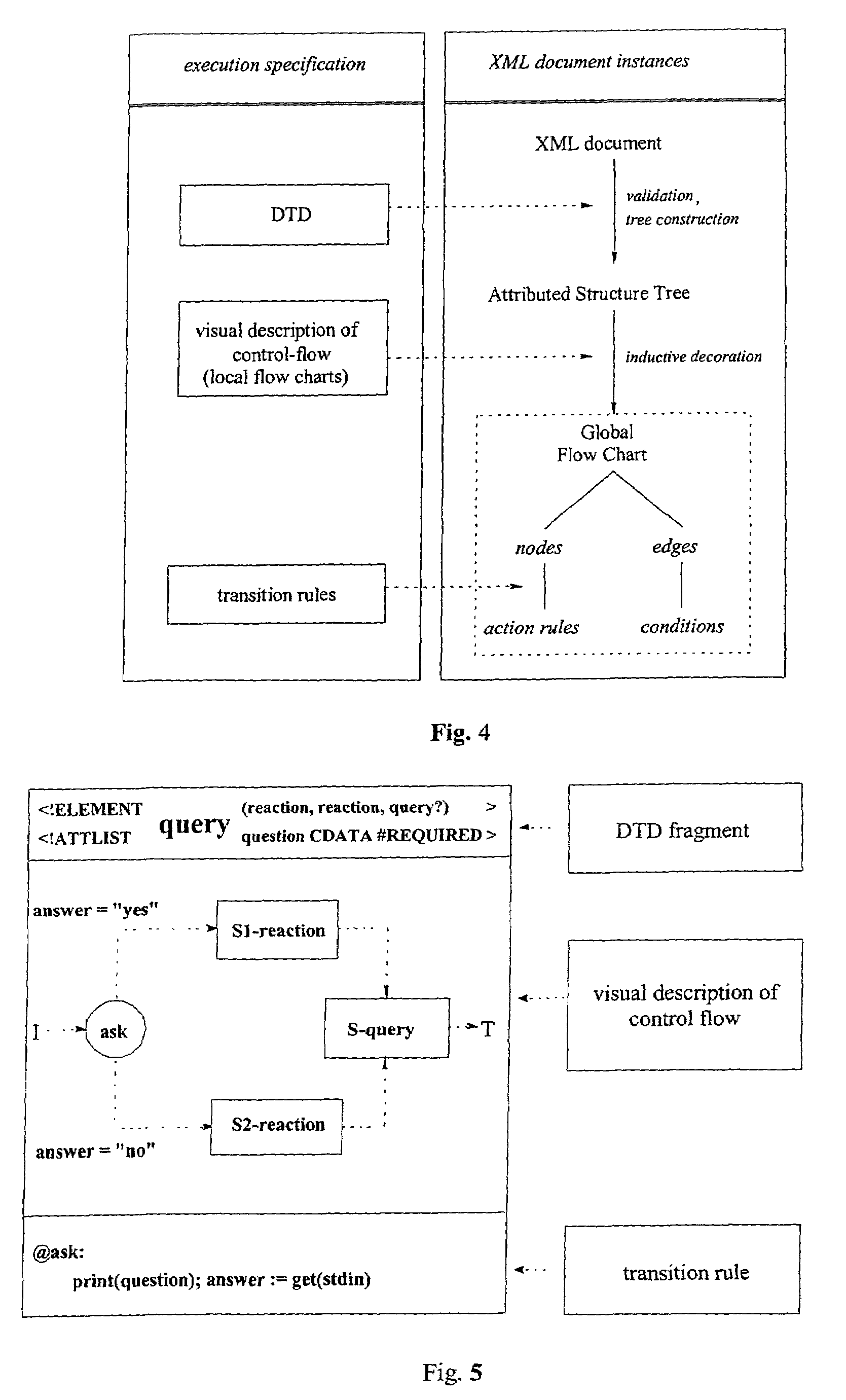Methods and systems for direct execution of XML documents
a technology of xml documents and methods, applied in the direction of specific program execution arrangements, program control, instruments, etc., can solve the problems of complex treatment, complex general-purpose programs, complex programs, etc., and achieve the effect of reducing the complexity of the program
- Summary
- Abstract
- Description
- Claims
- Application Information
AI Technical Summary
Benefits of technology
Problems solved by technology
Method used
Image
Examples
Embodiment Construction
[0042]The invention realizes the direct execution of an XML-document. The following embodiments describe a graphical and a textual realization of the invention. Even though the subsequent examples relate to XML-documents of a given and known DTD, the invention, taking into consideration certain disadvantages such as undefined results, allows the execution of an XML-document without a pre-known DTD. In any case, embodiments of the invention incorporate the DTD (if pre-known) or the XML-document directly with the XML-robot specification (“decoration” of the DTD or XML-document). The invention is, as described above, basically independent from the concrete implementation (platform, program languages, structural forms such as storing and processing). However, where applicable, embodiments using a specific implementation are described below.
FIGS. 1 to 8 Illustrate a First Graphical Embodiment of the Invention
[0043]FIG. 1 shows a sample DTD with an element query having three components, t...
PUM
 Login to View More
Login to View More Abstract
Description
Claims
Application Information
 Login to View More
Login to View More - R&D
- Intellectual Property
- Life Sciences
- Materials
- Tech Scout
- Unparalleled Data Quality
- Higher Quality Content
- 60% Fewer Hallucinations
Browse by: Latest US Patents, China's latest patents, Technical Efficacy Thesaurus, Application Domain, Technology Topic, Popular Technical Reports.
© 2025 PatSnap. All rights reserved.Legal|Privacy policy|Modern Slavery Act Transparency Statement|Sitemap|About US| Contact US: help@patsnap.com



